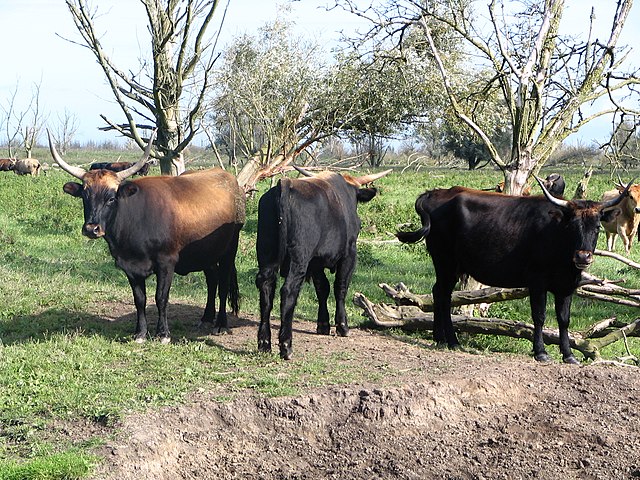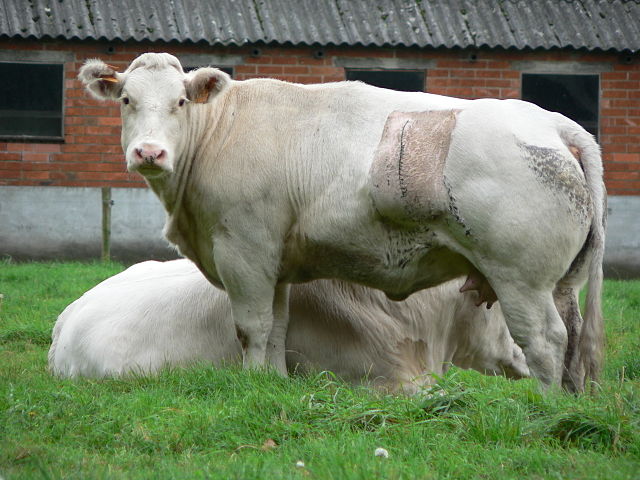Breeding back is a form of artificial selection by the deliberate selective breeding of domestic animals, in an attempt to achieve an animal breed with a phenotype that resembles a wild type ancestor, usually one that has gone extinct. Breeding back is not to be confused with dedomestication.
Heck cattle were bred in the 1920s to resemble the aurochs.
Taurus cattle bull in the Lippeaue Reserve, Germany
Heck horse in Haselünne, Germany.
A Tamaskan Dog, bred to visually resemble a wolf
Selective breeding is the process by which humans use animal breeding and plant breeding to selectively develop particular phenotypic traits (characteristics) by choosing which typically animal or plant males and females will sexually reproduce and have offspring together. Domesticated animals are known as breeds, normally bred by a professional breeder, while domesticated plants are known as varieties, cultigens, cultivars, or breeds. Two purebred animals of different breeds produce a crossbreed, and crossbred plants are called hybrids. Flowers, vegetables and fruit-trees may be bred by amateurs and commercial or non-commercial professionals: major crops are usually the provenance of the professionals.
A Belgian Blue cow. The defect in the breed's myostatin gene is maintained through linebreeding and is responsible for its accelerated lean muscle growth.
This Chihuahua mix and Great Dane shows the wide range of dog breed sizes created using selective breeding.
Selective breeding transformed teosinte's few fruitcases (left) into modern maize's rows of exposed kernels (right).
Researchers at the USDA have selectively bred carrots with a variety of colors.








